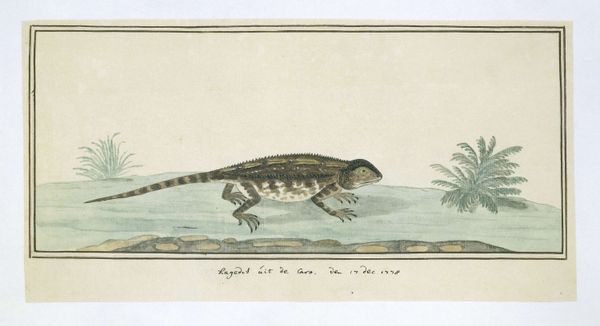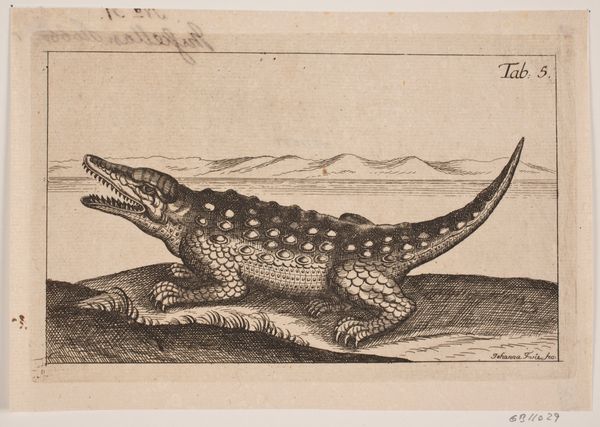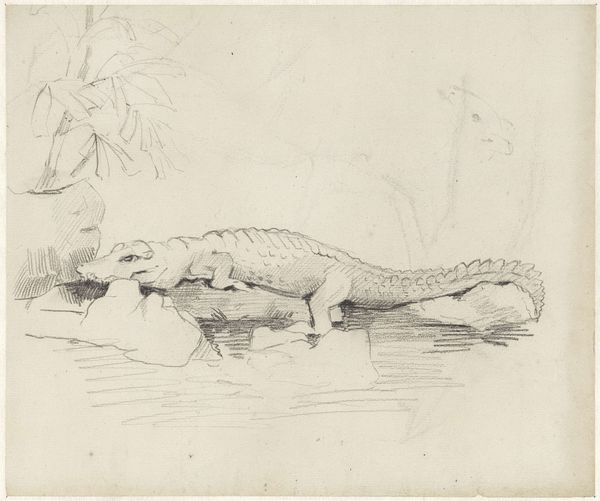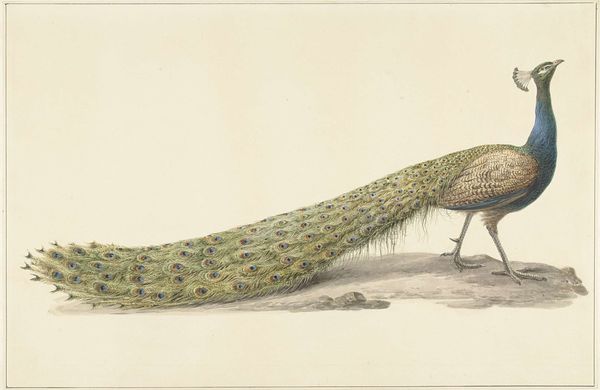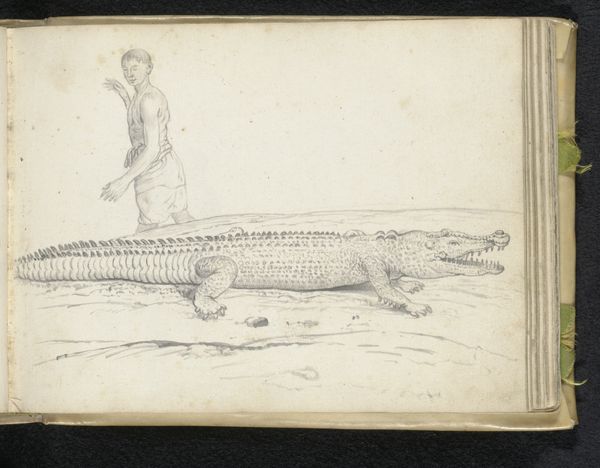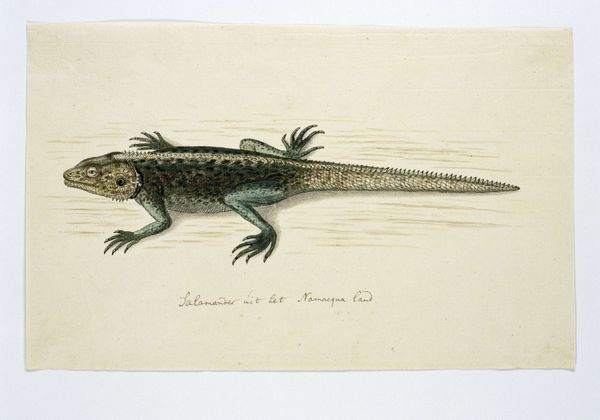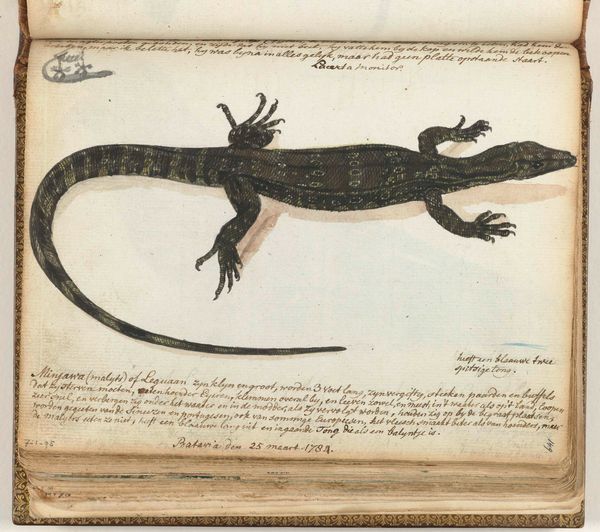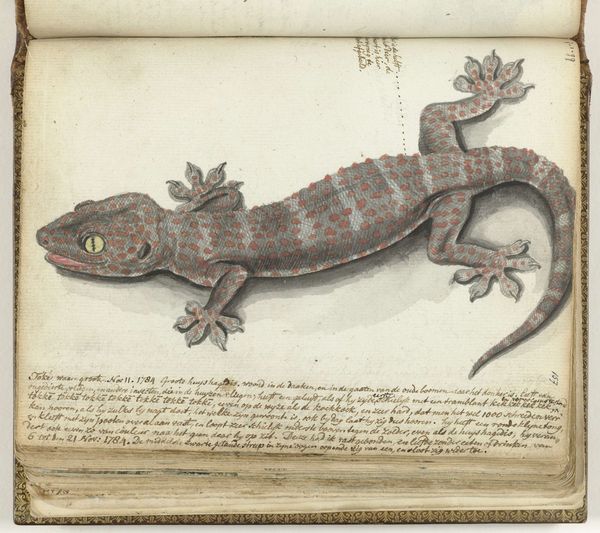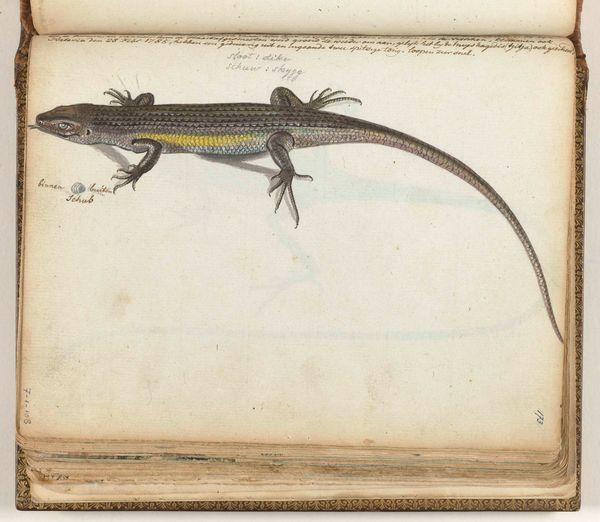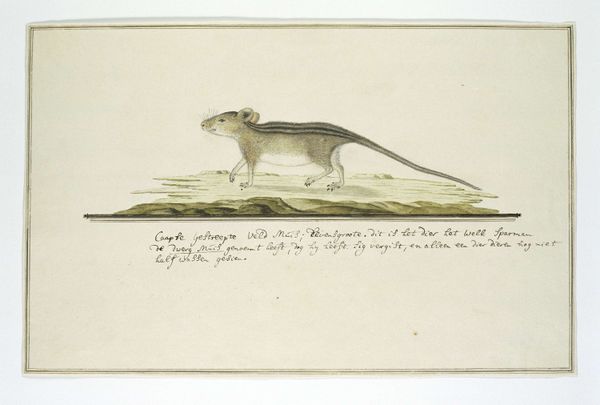
drawing, paper, watercolor, pencil
#
pencil drawn
#
drawing
#
landscape
#
paper
#
watercolor
#
coloured pencil
#
pencil
#
watercolour illustration
#
watercolor
#
realism
Dimensions: height 660 mm, width 480 mm, height 178 mm, width 343 mm, height 147 mm, width 316 mm
Copyright: Rijks Museum: Open Domain
Curator: "Varanus albigularis," the Rock Monitor, drawn by Robert Jacob Gordon possibly in 1779. What do you make of this depiction? Editor: Well, first, the materiality strikes me. It’s watercolor and pencil on paper. The animal seems meticulously rendered, but the landscape is… less so. It’s fascinating how the artist uses the materials to emphasize different elements. What stands out to you? Curator: The means of production! The artist, the paper, the pencils and watercolors themselves—they all represent specific resources deployed for a particular purpose. This wasn't "art" in the fine art sense we might consider today. Look at the ruler included. This was scientific documentation, perhaps for colonial administration or resource extraction. What labor went into sourcing these materials, into their production, into their transport? And what was the purpose of this representation for its commissioner? Editor: So, you see it less as an artistic expression and more as a form of…resource management, almost? Curator: Precisely. And consider how the consumption of materials like paper, pigments, and even the animal's habitat itself might be connected. Were these materials readily available to Gordon or were they trade goods acquired through complex supply chains? The colored pencils, for example: from where did they originate? What dyes were used? These things tell us something significant about production networks and colonial science in the 18th century. Editor: That perspective really shifts how I see it. I was initially drawn to the almost quaint aesthetic, but now I see the work embedded within these networks of resource use and scientific labor. Curator: It encourages us to reconsider what constitutes "art" and how social and material circumstances define it. I also see that "art" of its time became the extraction of wealth during colonisation. Editor: I definitely learned to look past the surface and to think about the making of art and objects as the beginning of its full story, rather than the end! Thanks.
Comments
No comments
Be the first to comment and join the conversation on the ultimate creative platform.
